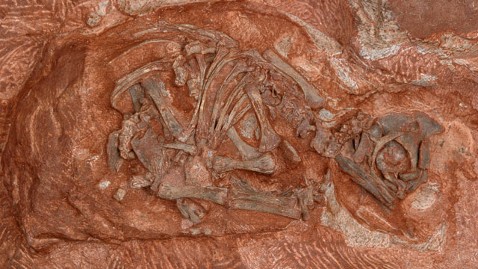Ancient Dino Nursery Reveals Mother's Love in Cretaceous Period
While not your average nursery, a newly discovered nesting area reveals that some early dinosaurs were more attentive parents than previously known.
Paleontologists recently uncovered fossilized eggs and footprints at a 190 million-year-old South African site shedding new light on the reproductive and parenting traits of the Massospondylus dinosaurs. The long necked species, related to the giant sauropods from the Jurassic and Cretaceous periods, could grow to nearly 20 feet in length.
Currently 10 nests have been found at the site, which is 100 million years older than any other previously discovered nesting site.
David Evans, the associate curator of vertebrate paleontology at the Royal Ontario Museum said that prior to the excavation there was sparse information on how early dinosaurs procreated.
"This amazing series of 190 million-year-old nests gives us the first detailed look at dinosaur reproduction early in their evolutionary history," said Evans.
One surprising discovery was that the Massospondylus carefully arranged their eggs in a single layer in their nests similar to way birds lay eggs.
"What it actually tells us, is that many of the complex reproductive behavoirs are actually there very early on," said Robert Reisa, who led the study and is a professor of biology at the University of Toronto Mississauga.
While the fully grown Massospondylus walked on their hind legs, tiny footprints found near the nests suggest that their offspring began their lives walking on four legs and were cared for by their parents until they at least doubled in size.
"That's a very interesting phenomenon that's not seen in other dinosaurs," said Reisz about the hatchlings development into bipeds. "It's just amazing and the fact of the matter is we were just blown away by it."
While scientists are working on excavating more nests in the area, non-paleontologists can view a few of the fossils currently on display at the Royal Ontario Museum in Toronto.
